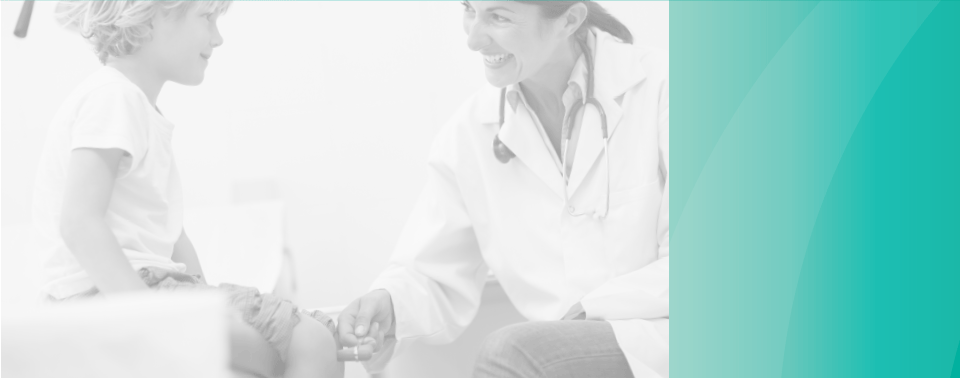
By reporting to the Part D plan the drug(s) covered by the PAP, the PAP provides the Part D plan with the information the plan needs to exclude from an enrollee’s “true out-of-pocket” balance (TrOOP) any assistance the PAP provides for drugs that otherwise would be covered under Part D. The PAP may report information about the drug(s) covered by the PAP to the Part D plan using any of a variety of mechanisms – including via telephone, mail, electronic mail, and FAX. The PAP may not report information about the drugs(s) covered by the PAP to the Part D plan only by providing a notification to the enrollee, though it may use this method in combination with the direct provision of this information to the Part D plan via the mechanisms described above.
Full Answer
What is PAP in Medicare?
Can pharmaceutical companies make donations to PAPs?
Can OIG prevent Medicare from helping uninsured patients?
About this website

Is patient assistance program legitimate?
Patient assistance programs (PAPs) are usually sponsored by pharmaceutical manufacturers and are promoted as a safety net for Americans who have no health insurance or are underinsured.
What does Part D pay for?
The Medicare Part D program provides an outpatient prescription drug benefit to older adults and people with long-term disabilities in Medicare who enroll in private plans, including stand-alone prescription drug plans (PDPs) to supplement traditional Medicare and Medicare Advantage prescription drug plans (MA-PDs) ...
How much is the donut hole for 2022?
Donut Hole: Who Pays What in Part D Medicare beneficiaries will see a Part D deductible up to $480 in 2022, followed by an Initial Coverage Period in which they will be responsible for 25% of costs up until they reach the threshold of $4,130 spent on prescription medications.
Why do pharmaceutical companies offer patient assistance programs?
They increase demand, allow companies to charge higher prices, and provide public-relations benefits. Assistance programs are an especially attractive proposition for firms that sell particularly costly drugs. Faced with high out-of-pocket costs, some patients may decide against taking an expensive medication.
Does Medicare Part D have a maximum out-of-pocket?
Medicare Part D, the outpatient prescription drug benefit for Medicare beneficiaries, provides catastrophic coverage for high out-of-pocket drug costs, but there is no limit on the total amount that beneficiaries have to pay out of pocket each year.
Why is Medicare charging me for Part D?
If you have a higher income, you might pay more for your Medicare drug coverage. If your income is above a certain limit ($91,000 if you file individually or $182,000 if you're married and file jointly), you'll pay an extra amount in addition to your plan premium (sometimes called “Part D-IRMAA”).
Do all Medicare Part D plans have a donut hole?
Can I find Medicare Part D plans without the donut hole? No, all Medicare prescription drug plans include the donut hole. If you anticipate reaching the donut hole and have trouble with costs, you can apply for Extra Help with Medicare Part D.
What drugs are not covered by Medicare Part D?
Medicare does not cover:Drugs used to treat anorexia, weight loss, or weight gain. ... Fertility drugs.Drugs used for cosmetic purposes or hair growth. ... Drugs that are only for the relief of cold or cough symptoms.Drugs used to treat erectile dysfunction.More items...
Does Medicare Part D still have a donut hole?
Does Medicare Part D still have a donut hole? No, the donut hole in the middle of Part D prescription coverage, where you had to pay 100 percent of the drug costs yourself until your out-of-pocket spending reached a certain level, has been closed.
What happens if you can't afford a prescription?
The first place to look for help are the drug patient assistance programs (PAPs). These are programs run by drug companies that give free medicine to people who can't afford to pay for them. Not everyone qualifies, but millions of people have been helped.
How do patient support programs work?
A patient assistance or support programs (PAPs or PSPs) exist to get you timely access to medication and to help you stay on track of your therapy. Being diagnosed with a complex disease or condition may come with unexpected financial burden and a need to better understand treatment options and next steps.
What is Pfizer Assistance Program?
Pfizer RxPathways® patients in need get access to their Pfizer medicines. Today, Pfizer RxPathways® connects eligible U.S. patients to a range of Pfizer assistance programs that provide insurance support, co-pay help, and medicines for free or at a savings.
What is the Medicare Part D deductible for 2022?
$480 deductibleMost Part D PDP enrollees who remain in the same plan in 2022 will be in a plan with the standard (maximum) $480 deductible and will face much higher cost sharing for brands than for generic drugs, including as much as 50% coinsurance for non-preferred drugs.
What are the 4 phases of Part D coverage?
The Four Coverage Stages of Medicare's Part D ProgramStage 1. Annual Deductible.Stage 2. Initial Coverage.Stage 3. Coverage Gap.Stage 4. Catastrophic Coverage.
Is Medicare Part D deducted from Social Security?
If you are getting Medicare Part C (additional health coverage through a private insurer) or Part D (prescriptions), you have the option to have the premium deducted from your Social Security benefit or to pay the plan provider directly.
What is the Medicare donut hole for 2022?
You enter the donut hole when your total drug costs—including what you and your plan have paid for your drugs—reaches a certain limit. In 2022, that limit is $4,430.
New Special Advisory Bulletin Provides Additional Guidance on ...
A Supplemental Special Advisory Bulletin on patient assistance programs (PAPs) run by independent charities was released today by the Office of Inspector General (OIG) of the U.S. Department of Health and Human Services.
HHS OIG Approves Narrowly-Tailored Patient Assistance Program
On Jan. 15, 2020, the Department of Health and Human Services (HHS) Office of Inspector General (OIG) issued Advisory Opinion No. 20-02 which addresses whether a pharmaceutical manufacturer providing financial assistance to patients constitutes grounds for the imposition of sanctions under the civil monetary penalty provision prohibiting inducements to beneficiaries, section 1128A(a)(5) of the ...
Compliance Guidance | Office of Inspector General | Government ...
Compliance Guidance. OIG has developed a series of voluntary compliance program guidance documents directed at various segments of the health care industry, such as hospitals, nursing homes, third-party billers, and durable medical equipment suppliers, to encourage the development and use of internal controls to monitor adherence to applicable statutes, regulations, and program requirements.
Pharmaceutical Manufacturer Patient Assistance Program Information | CMS
Pharmaceutical manufacturers may sponsor patient assistance programs (PAPs) that provide financial assistance or drug free product (through in-kind product donations) to low income individuals to augment any existing prescription drug coverage.
What is PAP in Medicare?
As explained in the Bulletin, arrangements through which a pharmaceutical manufacturer would use a PAP it operates or controls to subsidize its own products that will be payable by Medicare Part D present a heightened risk of fraud and abuse .
Can pharmaceutical companies make donations to PAPs?
For example, the Bulletin, reflecting long-standing OIG guidance, makes clear that pharma ceutical manufacturers can make cash donations to bona fide independent charity PAPs that are not affiliated with a manufacturer and operate without regard to donor interests, providing appropriate safeguards exist. These programs are typically operated by patient advocacy and support organizations.
Can OIG prevent Medicare from helping uninsured patients?
Finally, the Bulletin makes clear that nothing in any OIG laws or regulations prevents pharmaceutical manufacturers or others from helping uninsured patients and Medicare beneficiaries who have not enrolled in Part D with their outpatient prescription drugs.
How to PA for Xifaxan?
In 2019, PAs had a 78% PA approval rate for IBS-D when submitted through CoverMyMeds.1 To start a PA for XIFAXAN, you can go to covermymeds.com or call 1-866-452-5017.
Is Xifaxan covered by Medicare?
Double-check coverage; Medicare excludes certain kinds of drugs, but XIFAXAN is not in those categories. Medication not covered. You can ask insurance plan to reevaluate; XIFAXAN is covered for 99% of commercially insured patients and 95% of Medicare patients 1†§. † Salix Pharmaceuticals does not guarantee coverage or reimbursement for the product.
What is PAP in Medicare?
As explained in the Bulletin, arrangements through which a pharmaceutical manufacturer would use a PAP it operates or controls to subsidize its own products that will be payable by Medicare Part D present a heightened risk of fraud and abuse .
Can pharmaceutical companies make donations to PAPs?
For example, the Bulletin, reflecting long-standing OIG guidance, makes clear that pharma ceutical manufacturers can make cash donations to bona fide independent charity PAPs that are not affiliated with a manufacturer and operate without regard to donor interests, providing appropriate safeguards exist. These programs are typically operated by patient advocacy and support organizations.
Can OIG prevent Medicare from helping uninsured patients?
Finally, the Bulletin makes clear that nothing in any OIG laws or regulations prevents pharmaceutical manufacturers or others from helping uninsured patients and Medicare beneficiaries who have not enrolled in Part D with their outpatient prescription drugs.
